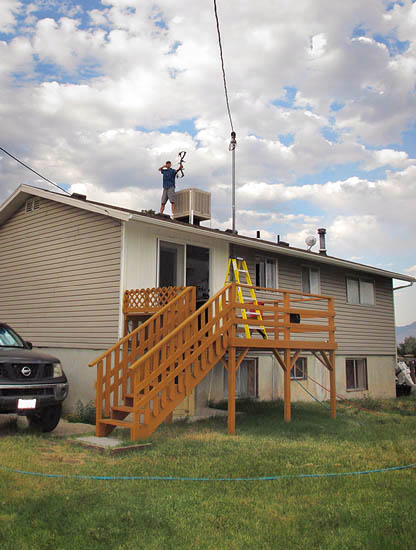Dominant Eye and Archery
Occasionally I have a beginner student consistently missing wide of the bullseye. At first it appears they’re doing everything correctly, however it quickly becomes apparent that the person is aiming with the wrong eye. Even after pointing this out, he keeps shooting with the wrong eye, or the eye that’s farthest from the arrow.
Knowing which of eye is dominant is imperative to accuracy in archery. If you try aiming with your the wrong eye, the target won’t be in the right place.
When I first hand out bows, I hand them out according to a person’s dominant hand (left or right-handedness). But some people have an opposite eye dominance. They write and throw a ball with their right hand, but they are left-eye dominant. How do you correct for this? Is it better to shoot a left-handed bow?
The answer is NO.
No matter which eye is dominant, you should still shoot with your dominant hand. Your dominant hand is your release hand, or the one that controls the arrow, string, and the final release. This means that you’ll shoot more accurately and naturally using your dominant hand.
Fortunately you can easily train yourself to aim and shoot with your non-dominant eye.
The Fix
One fix is to simply close your non-shooting eye. This will immediately force you to aim with the correct eye. However, shooting with one eye closed is not recommended. Keeping both eyes open gives you a better sight picture and allows you to see depth and distance more accurately.

A better method is to wear an eye patch (temporarily) over your non-shooting eye. Yes, you will look like an archery pirate for a while, but in a short amount of time you’ll train yourself to shoot with the eye that matches your shooting hand.
What is Eye Dominance?
Your dominant eye is the one that sends the most information to your brain. It tends to be the eye that gets the most use. Some people have one eye that is much more dominant than the other, while others have an eye that is only slightly more dominant. You can find out which of your eyes is the dominant one using a simple at-home test.
Testing for Eye Dominance
The Miles Test, described below, is considered to be a good indicator of eye dominance:
- Extend your arms in front of you with your palms facing away.
- Bring your hands together, forming a small hole by crossing the thumbs and forefingers.
- Choose a small object about 15-20 feet away from you. With both eyes open, focus on the object as you look through the small hole.
- Close one eye and then the other. When you close one eye, the object will be stationary. When you close the other eye, the object should disappear from the hole or jump to one side.
- If the object does not move when you cover one eye, then that eye is dominant. The eye that sees the object and does not move is the dominant eye.

Final Thoughts
Although it is possible for a right-handed person to learn how to shoot a left-handed bow, it is much more natural (and more accurate) to learn to shoot with your non-dominant eye. If you are wondering where to get an eye patch, just look to your local pharmacy.





